Every brand wants to offer their customers the best loyalty program and the reason why is clear.
According to recent loyalty statistics, 81% of consumers agree that holding a loyalty program membership to a brand influences their likelihood of making a purchase from that brand. What’s concerning is that although most consumers belong to between one and six loyalty programs, almost three-quarters of them use less than half of their memberships.
But there are certain loyalty programs that stand out as the best of the best. What sets them apart? What can you take away from them when designing or revamping your own program?
Here are 11 key elements that the best rewards programs have (along with examples).
Table of Contents
- Make Consumers Aware of Your Loyalty Program
- Simplify the Signup Process
- Personalize the Member Experience
- Leverage Your Brand for the Rewards Program
- Give Your Members Options with a Tiered Loyalty Program
- Include Premium Loyalty to Target Your Best Customers
- Allow More Options for Point Redemption
- Offer More Attainable Rewards
- Boost Engagement Through Loyalty Amplifiers
- Mix Transactional and Experiential Benefits
- Implement Cause Marketing
- Having the Best Loyalty Program Means Listening to Your Customers
Make Consumers Aware of Your Loyalty Program
If you want to rank among the best loyalty programs, the first step is acquiring members. You can have a great program, but if your customers don’t know about it, then it doesn’t matter. One of the top reasons consumers don’t sign up for loyalty programs is they’re simply not aware of them.
In-store signage and/or kiosks explaining the benefits of a loyalty program can help increase awareness among consumers. Placing QR codes throughout the store where consumers can sign up with their phones is another option.
Ensure your in-store associates are properly trained about your loyalty program to keep it top-of-mind among customers.
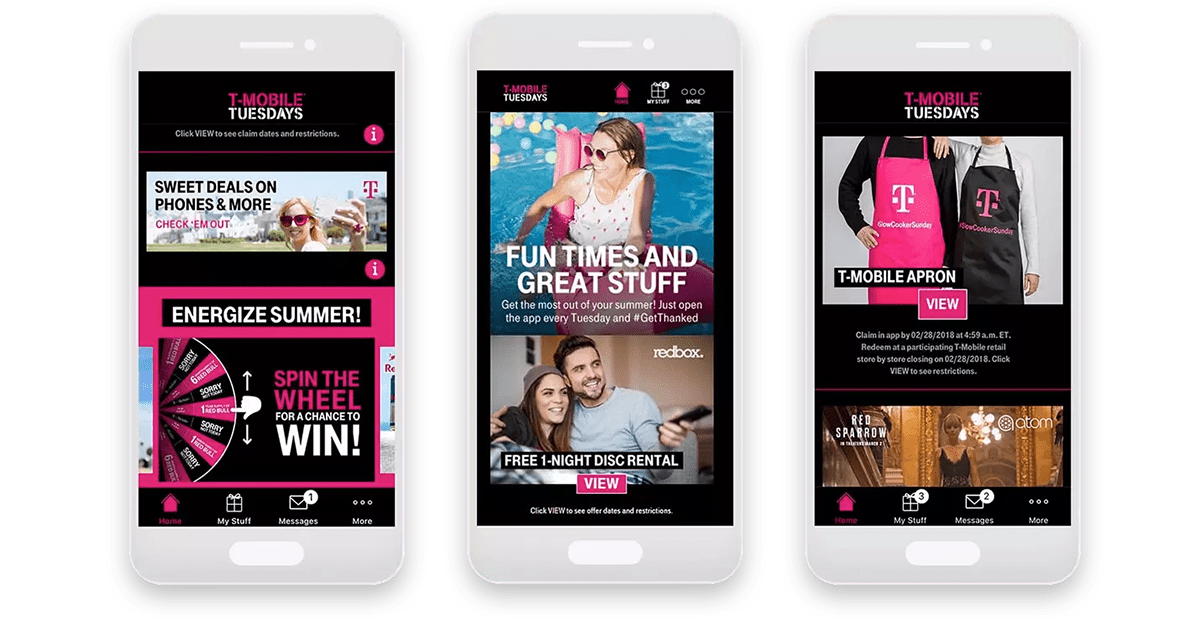
For example, T-Mobile Tuesdays is a first-of-its-kind loyalty program. It stays top-of-mind by rewarding members with new perks every Tuesday using its scalable offer platform. To participate in T-Mobile Tuesdays, consumers can download the app, sign up with their T-Mobile or Sprint phone number and check the app every Tuesday to claim their deals.
T-Mobile Tuesdays explores new ways to reward customers through innovative engagements and partnerships to enhance the reward experience. T-Mobile segments and publishes offers and micro-experiences by user, location and customer preferences.
Also, the program offers customers exclusive benefits and the chance to enter to win prizes every week.
Read the T-Mobile Tuesdays case study here.
Simplify the Signup Process
If someone wants to join your loyalty program, but finds a confusing and complex registration process, it’s over before it starts.
The No. 1 reason (42%) consumers don’t sign up for a brand’s loyalty program is because it requires too much effort/it’s time-consuming. And 27% of consumers say the signup process for a brand’s loyalty program is inconvenient.
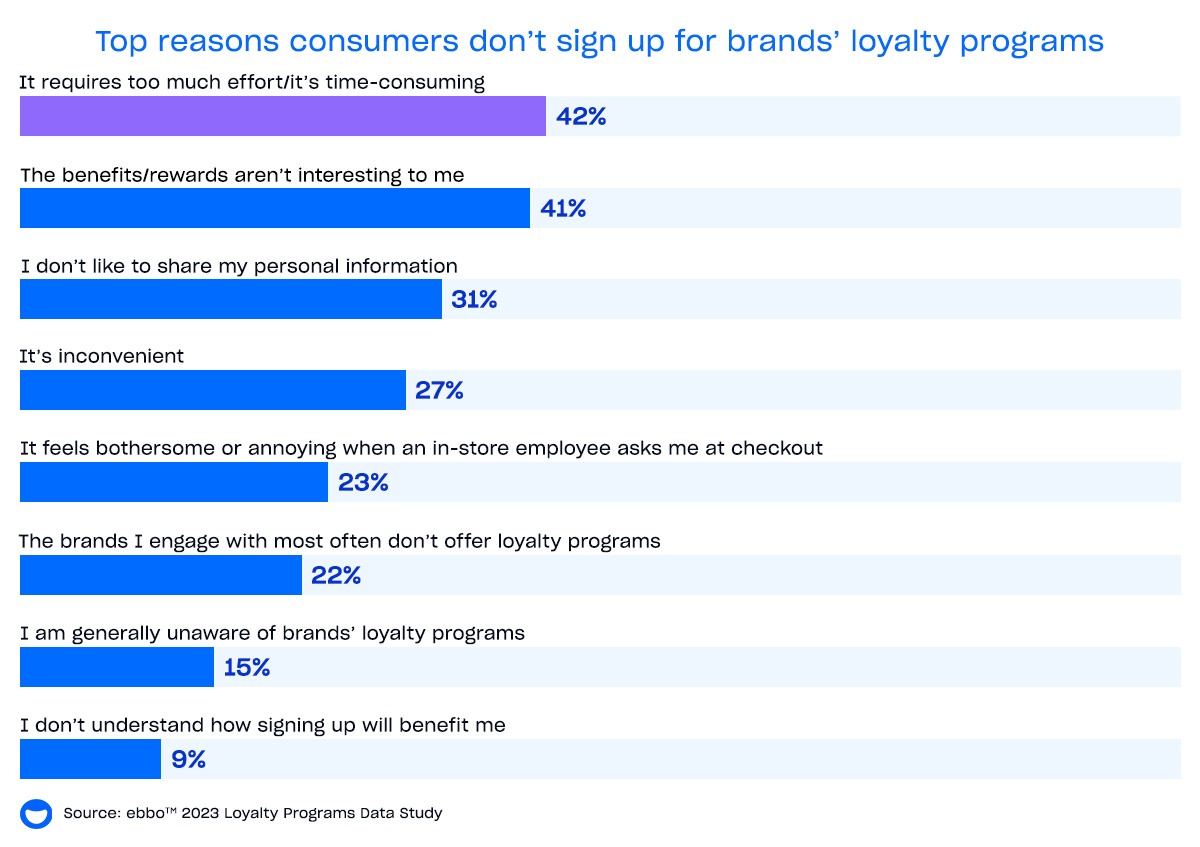
Consumers have too many options today to waste time trying to join a loyalty program that has a complicated process.
Simplify your loyalty program registration process as much as possible. And, as a rule of thumb, it shouldn’t take a consumer more than five minutes to enroll in your program.
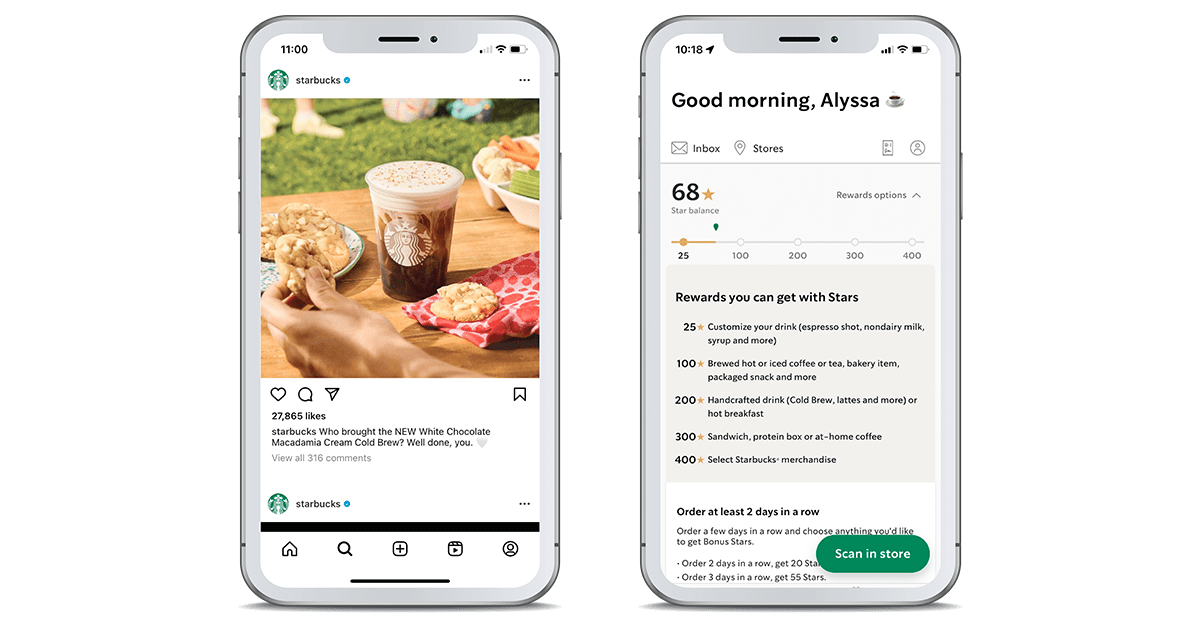
To join Starbucks Rewards, consumers just need their name, email address and password to create an account.
When you join Starbucks Rewards, you automatically are provided with a digital Starbucks Card with a zero balance. You can add funds to your digital Starbucks Card either online, through the app or in person at a participating Starbucks store.
Personalize the Member Experience
According to new consumer data about loyalty programs, 90% of consumers agree that when it comes to being personalized to their preferences, most loyalty programs have room for improvement.
Personalization has almost become a mandate from consumers to brands.
They care about personalized experiences because everyone wants to be recognized and loyal to brands that recognize and know them. It’s about being part of a brand community that is exclusive and engaging.
Brands can use customer profiles to craft targeted marketing campaigns to help increase loyalty. Customer profiles list data points like interests, purchase behavior and demographic characteristics.
And these profiles give brands a better overall picture of their ideal customers. You can send them targeted content to strengthen the two-way relationships.
Having zero- and first-party data helps you divide customers into specific groups, which helps with sending personalized, targeted messages.
According to the 2023 Loyalty Amplifiers Data Study, in exchange for an incentive, 66% of consumers are likely to provide brands with more personal information and preferences to better personalize their loyalty program experience.
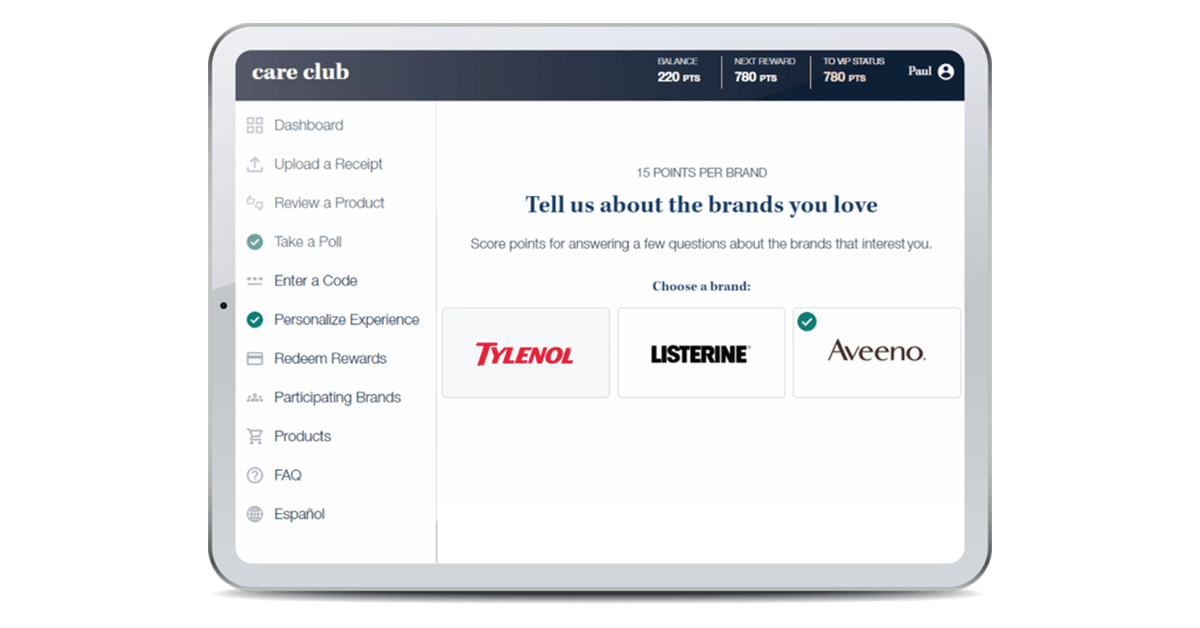
For example, we worked with Johnson & Johnson on the My Care Club Rewards loyalty program which personalizes the customer experience by leveraging member data.
Members earn points for product purchases, reviewing products, taking polls about product usage in their lives, watching videos reading articles about healthy life choices and personalization actions that help define the program experience.
J&J collects a minimal amount of data when a customer joins the My Care Club rewards program.
And this is why the “Personalize Your Experience” piece of the registration is important. In exchange for program points and the promise of delivering a more relevant experience, members update their profile with a range of first-party data including age, birthday, retailer preferences, gender, number and ages of children, categories that members are interested in (Beauty, Baby & Child Care, Diabetes, Sustainability, etc.) and the J&J brands they currently purchase or want to hear more from.
When members review a product, the program stores that information and links it to member profiles.
A monthly one-question poll provides another opportunity to collect first-party data. Reading articles and watching videos helps company officials gain additional member insights.
Read more loyalty program case studies here.
Leverage Your Brand for the Rewards Program
91% of consumers agree that many loyalty programs feel similar and are not that differentiated from others. That statistic says a lot about today’s consumers and their views on rewards programs.
While consumers love to join points-based loyalty programs, they often lose sight of them because brands don’t give them a reason to engage. These programs are very popular but lack originality and consumers view them all the same.
But programs that reinforce their brand message and offer rewards that are tailored to their customers tend to see higher engagement. This opportunity is where you can differentiate your loyalty program by highlighting your brand story in an interesting and engaging way.
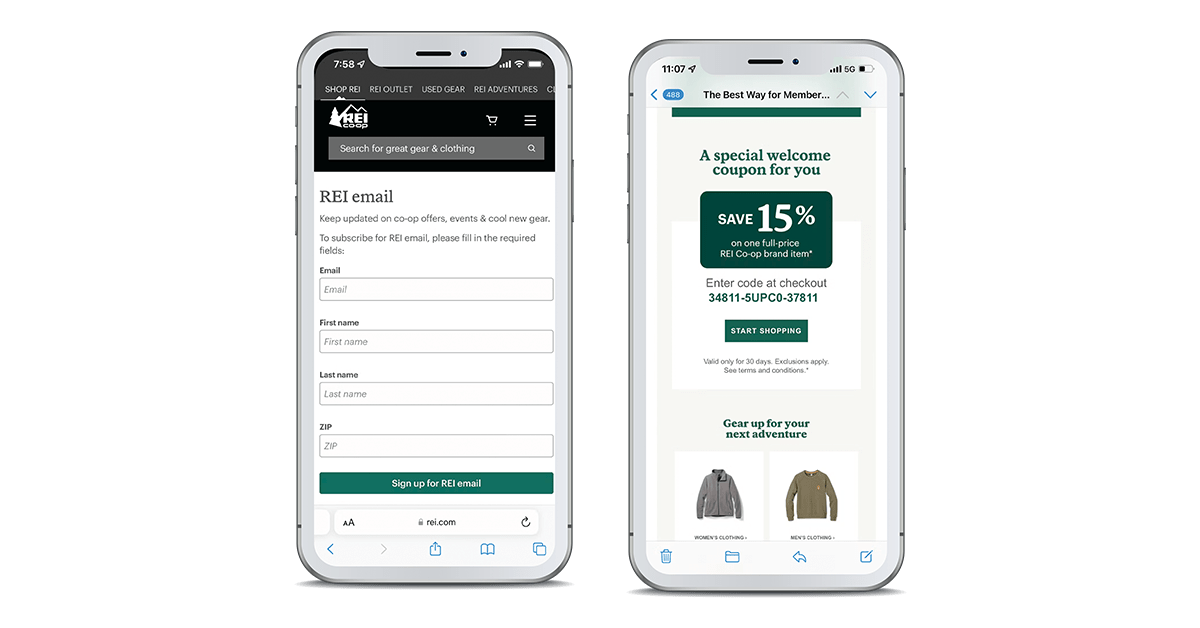
For example, REI’s Member Co-Op program is among the best loyalty programs because everything about it is driven by the brand’s focus on the outdoor lifestyle.
Lifetime membership to REI’s Member Co-Op program is only $30.
Co-Op members can:
- Shop and trade in used gear.
- Gain early access to curated products and limited-edition gear.
- Receive special pricing and discounts on REI Co-op classes, day trips and nationwide adventures.
- Receive free flat tire repair for bicycles and machine wax for skis or boards.
REI officials hope to grow its membership base from 20 million to 50 million by 2030.
With each new member, REI donates $5 to the REI Cooperative Action Fund, a community-supported public charity to build a more equitable and inclusive outdoor community.
Give Your Members Options with a Tiered Loyalty Program
74% of consumers agree that they would engage more with brands that offered different tiers in their loyalty programs based on how much they spend per year. Tiers add appeal to your loyalty program because certain benefits can be tied to how much members spend and they can choose what tier they want to join or aspire to.
When you offer loyalty program tiers, you give your customers options. Tiers motivate consumers to engage more. Making progress toward the next tier has a psychological effect on consumers, along with the promise of unlocking enhanced benefits.
Experiential rewards are common benefits of the exclusive highest tiers.
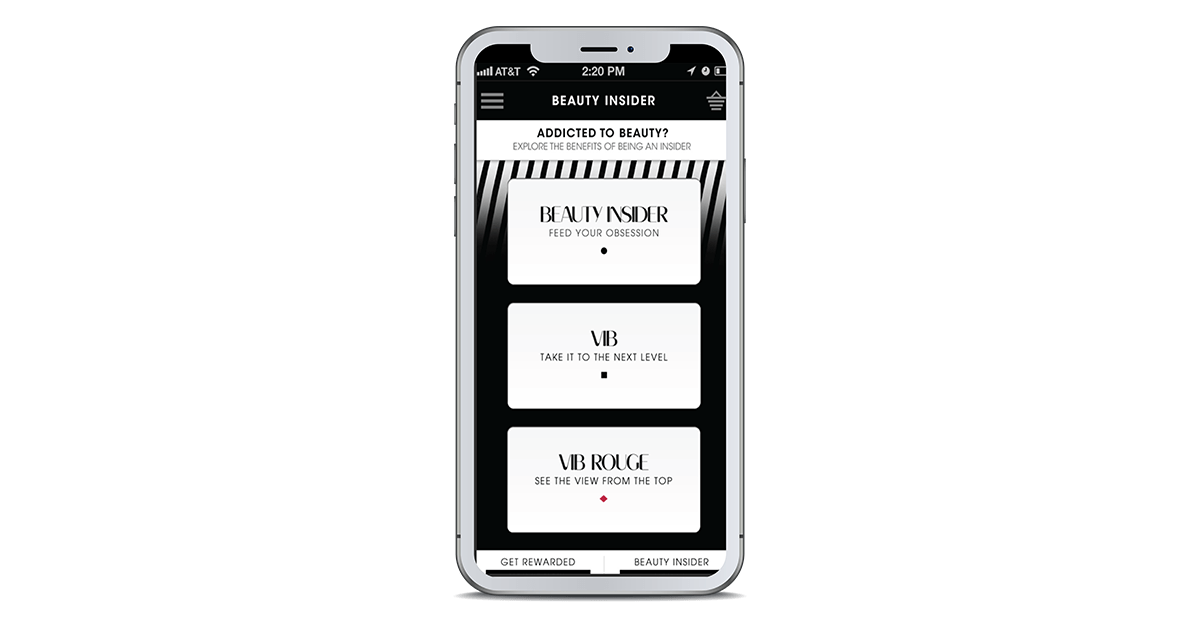
Sephora’s Beauty Insider is one of the best loyalty programs because of its various experiential benefits. Consumers who sign up receive access to things like the Beauty Insider Community and beauty classes without having to spend anything at all.
Members that spend $350 annually gain access to the VIB tier, which offers free gifts and one makeover per year. Members who spend $1,000 annually are upgraded to Rouge status where they have access to a private hotline and exclusive events.
Other benefits include:
- Beauty Insider Cash
- Seasonal savings events
- Free standard shipping
- Samples rewards
- Exclusive gifts and experiences
- First access to products
- Beauty classes
Sephora does a great job of engaging members and keeping the program fresh and exciting. Sephora Beauty Insiders know they’re receiving exclusive experiences unavailable to non-members.
Sales associates have access to all customer profiles that include data on in-store purchases, online browsing and purchasing patterns and in-store interactions. They use this data to send personalized messages via the program app consistent with the customer profiles.
Also, they link personalized offers in all communications across email, web and mobile.
At Sephora each brand, on every platform, displays the customer’s loyalty points—and this includes the in-store sales associates, who reiterate point totals. Associates can access customer profiles in-store and track items that were sampled, making it easy for them to find and buy them.
Read about the 7 Types of Loyalty Programs.
Include Premium Loyalty to Target Your Best Customers
You can also include a premium loyalty tier, which is a subscription-based loyalty program that can be added to a tiered points-based program. Premium loyalty members are your best and most valuable customers. They pay a monthly or annual membership fee to receive instant, enhanced benefits that elevate their engagement levels.
Benefits can include exclusive access to experiences or events, high-touch services like dedicated phone support or concierge services and premium content for members like streaming video, music and eBooks.
74% of consumers are likely to invest in a brand’s premium loyalty program if they already belong to that brand’s points-based loyalty program. And more than half (56%) of consumers plan to join additional premium loyalty programs in the next 12 months.
These stats signal the rising popularity of premium loyalty programs among consumers.
Consider this progression: 58% of consumers belonged to a premium loyalty program in 2019, 66% in 2020, 70% in 2021, 72% in 2022 and 77% this year.
When consumers join a premium loyalty program, they receive more value and better benefits than a points program can offer. Brands gain incremental revenue from the subscription fees that can be used to fund the program and its valuable benefits.
If a premium loyalty member opts out, they’re still a member of your free program and remain in your brand’s ecosystem.
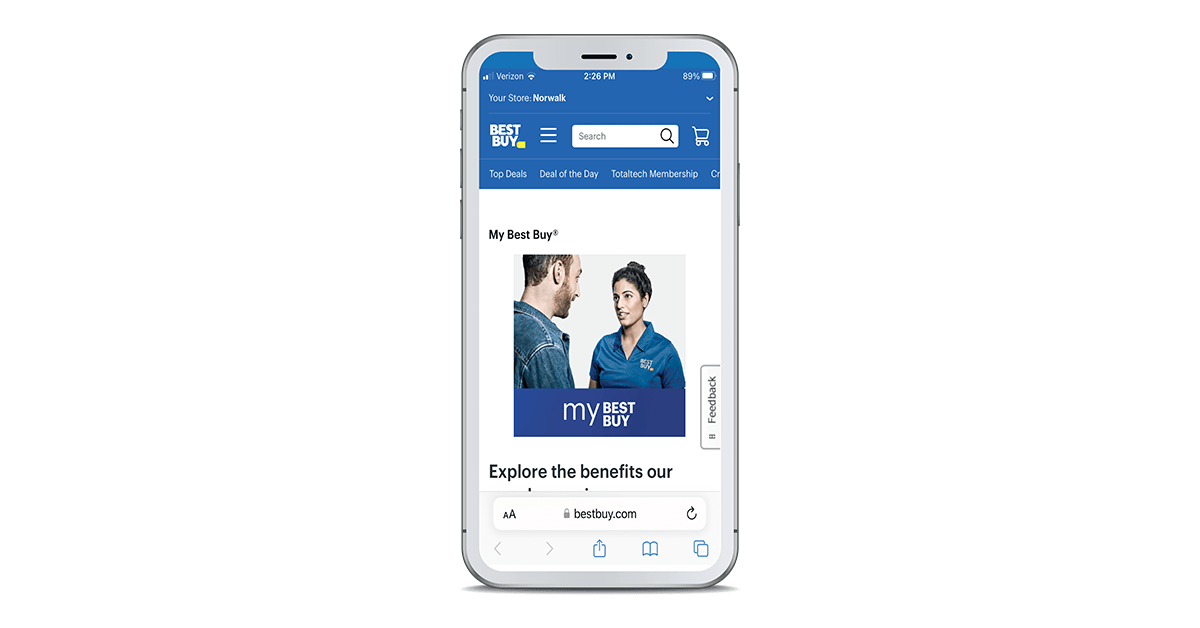
In May Best Buy unveiled three membership options — My Best Buy Memberships™ — that give customers more freedom to choose a membership that fits their technology needs, budget and lifestyle.
One of these options includes a new tier, at a more affordable price, which offers exclusive prices and access to highly anticipated product releases.
The three memberships are My Best Buy™, My Best Buy Plus™ and My Best Buy Total™. The first option is free and the other two carry annual membership prices.
Each membership tier has a different set of benefits – ranging from members-only pricing and deals, access to exclusive sales and events, 24/7 tech support, product protection, free shipping and more – and at different price points, giving customers the ability to choose an option that best fits the convenience, value, support and protection they’re looking for.
Read more about how premium loyalty adoption is on the rise.
Allow More Options for Point Redemption
When people think of loyalty programs, they usually think of redeeming points for discounts or coupons.
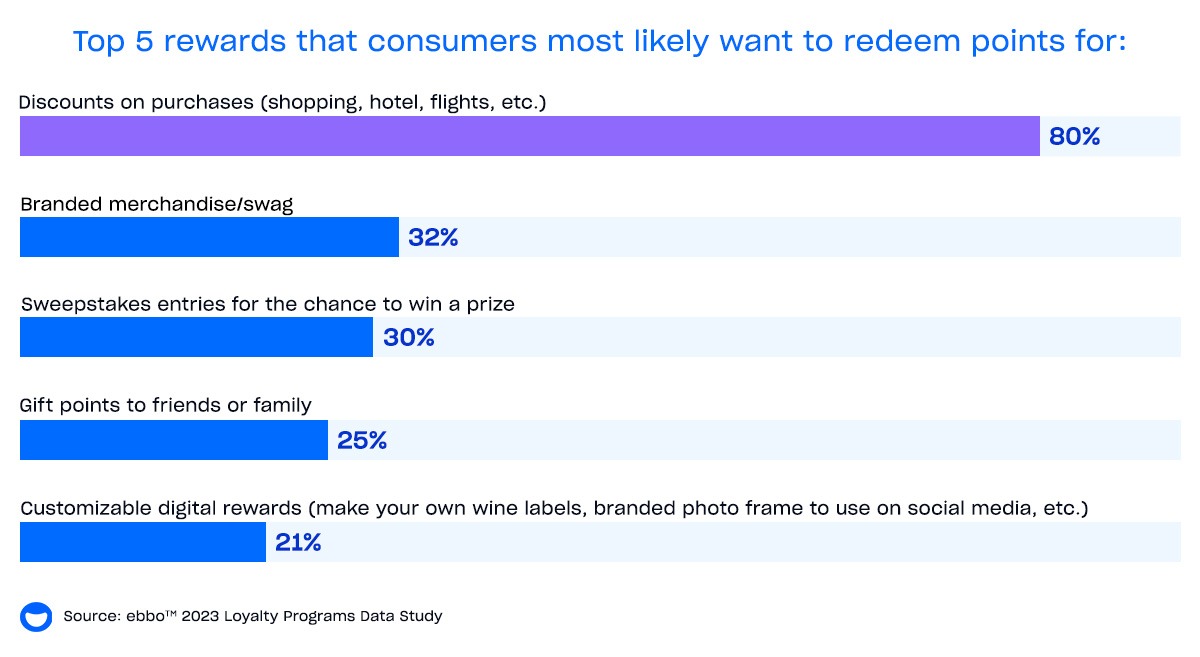
But our recent Loyalty Programs Data Study found that 67% of consumers want more options for what they can redeem their points for besides just coupons or discounts. These are the top five things they want to redeem points for:
- Discounts on purchases (shopping, hotel, flights, etc.) — 80%
- Branded merchandise/swag — 32%
- Sweepstakes entries for the chance to win a prize — 30%
- Gift points to friends or family — 25%
- Customizable digital rewards (make your own wine labels, branded photo frame to use on social media, etc.) — 21%
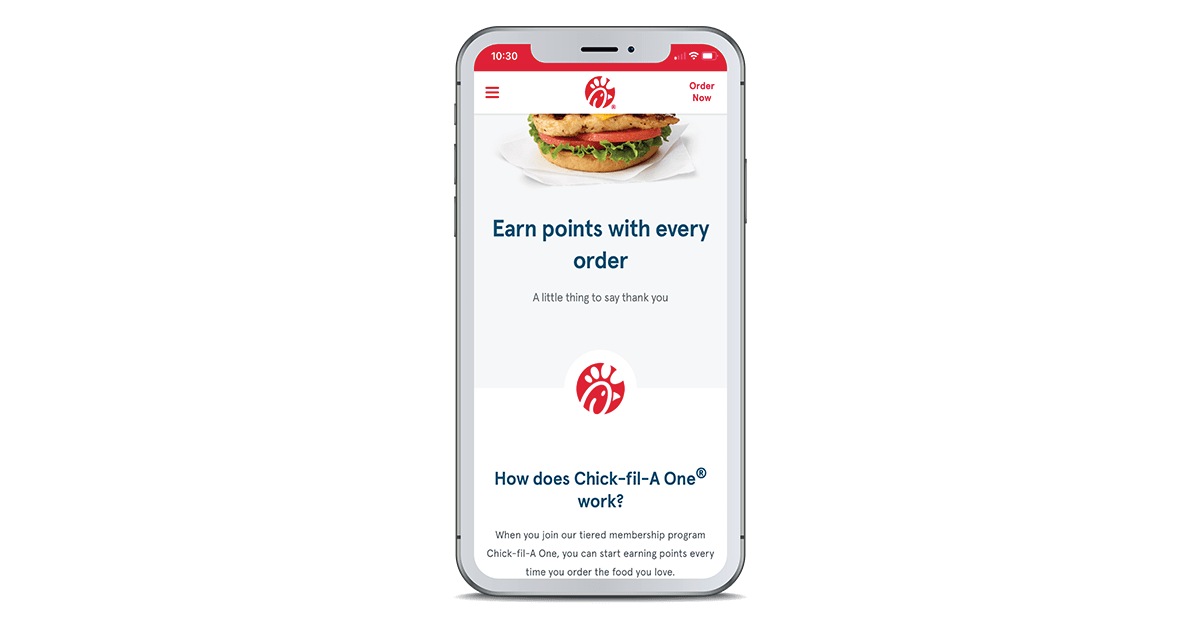
For example, as a Chick-fil-A One® Silver, Red and Signature Member, you can gift available rewards to friends or family.
You can gift a reward by selecting an available reward for redemption, selecting “Rewards” then “My Rewards” in the Chick-fil-A app to view eligible rewards. You can also select “Gift to a friend” on the item you would like to send and follow the prompts to create a link and share with the recipient of your choosing.
Offer More Attainable Rewards
While consumers still get excited about bit ticket rewards, almost three out of four customers feel that rewards are unattainable. They feel like rewards take too many points to earn. As a result, nearly 90% of consumers said they engage with loyalty programs less often if they feel it takes too long to earn rewards.
Consider 64% of consumers said more attainable rewards (for example, being able to redeem smaller quantities of points for smaller rewards versus having to save up large quantities of points for bigger rewards) are one of the top five things they would love to see from brand loyalty programs to offer a great member experience:
If you offer things like a chance to win a prize, a customized digital product or a donation to a charity—all things that don’t require a lot of points—your loyalty program members will engage more often.
Offer ways for your members to use their points sooner by creating more attainable rewards that will generate excitement and engagement.
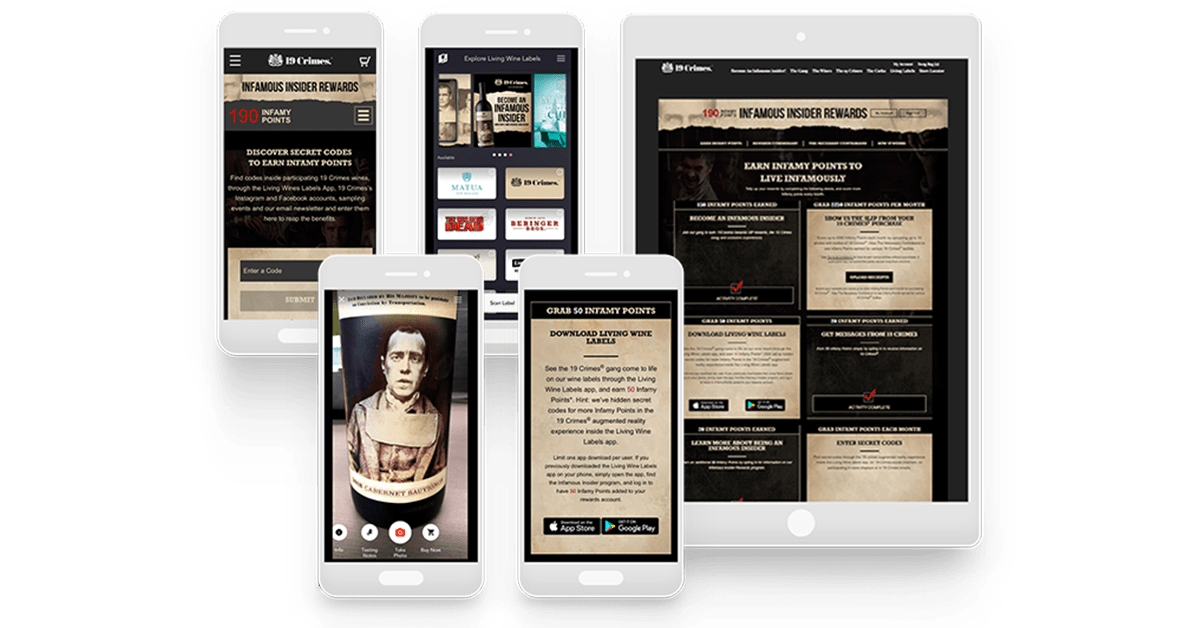
For example, 19 Crimes has a unique loyalty program called Infamous Insider Rewards which focuses on member acquisition, advocacy and point burn.
Members are rewarded for a variety of different activities, not just purchases, like receiving 150 points for joining, taking a profile quiz to get a free custom T-shirt or receiving points for taking polls.
19 Crimes allows members to redeem smaller quantities of points for unique rewards like custom wine labels, branded swag and sweepstakes entries rather than only requiring large numbers of points for bigger ticket items.
Boost Engagement Through Loyalty Amplifiers
88% of consumers are likely to join your loyalty program if you offer them an incentive.
Loyalty amplifiers are engagements that motivate and excite your members through additional incentives. They can range from instant win games to UGC contests, sweepstakes, social sweepstakes, trivia and more. They’re designed to engage consumers across their buying journeys and keep them coming back to your brand.
While they’re fun and engaging for program members, they also help brands achieve goals such as:
- Driving new customer acquisition
- Encouraging brand advocacy
- Educating customers
- Retaining loyal customers
- Driving sales
- Encouraging point burn
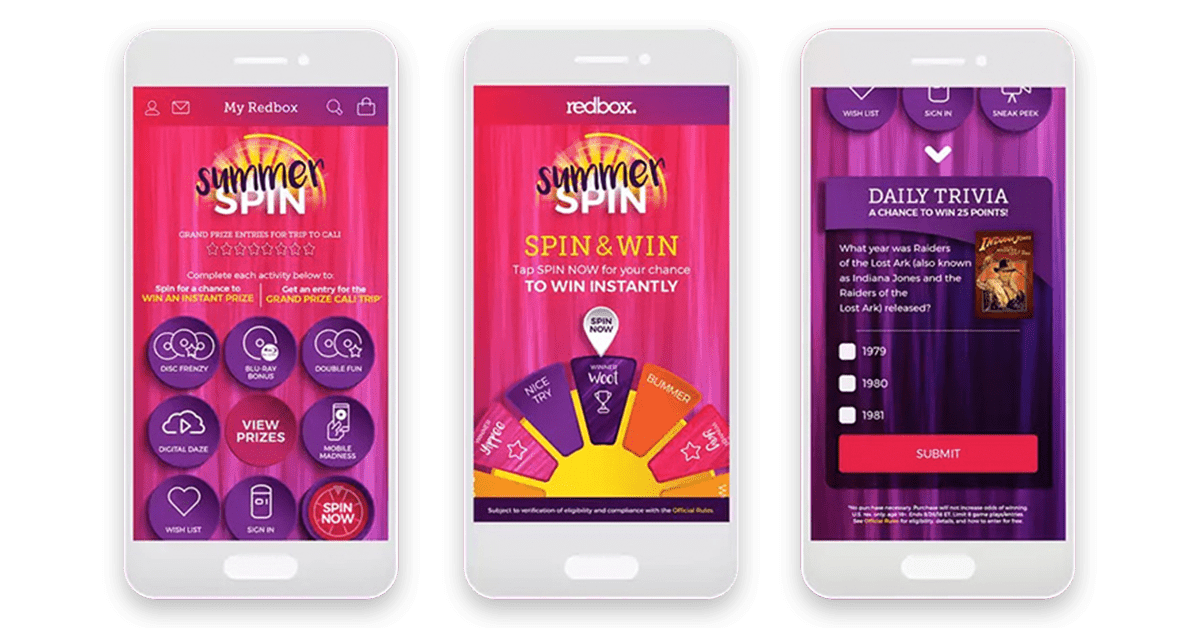
Consider Redbox Perks.
Redbox’s Summer and Winter Spin–a twice-year program created to engage Redbox Perks members. When Perks members access their Redbox Perks accounts, they receive a game board and various incentivized activities. Members earn Instant Win Game plays and sweepstakes entries when they complete each of the activities.
Read our webinar recap on loyalty amplifiers.
Mix Transactional and Experiential Benefits
Transactional benefits are important in any loyalty program, but experiential benefits elevate the member experience and create sustainable emotional connections between brands and consumers.
Loyalty programs that combine transactional and experiential benefits build a sense of community and exclusivity.
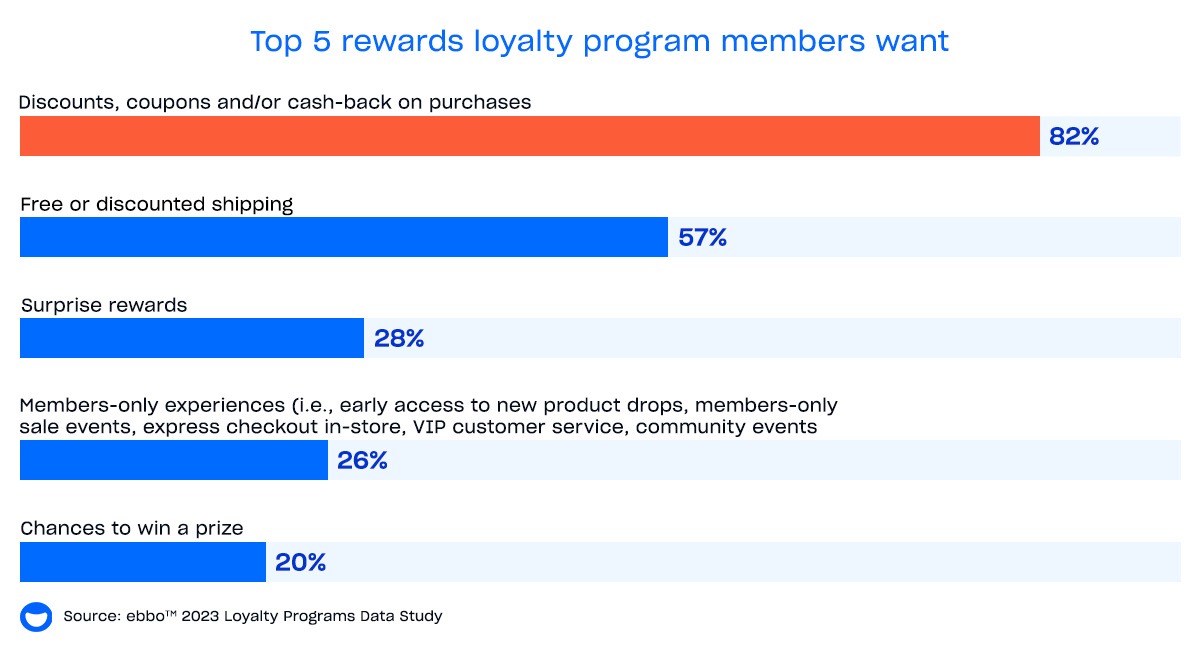
Recent data shows that 26% of consumers want members-only experiences such as early access to new product drops, members-only sales events, express checkout in-store, VIP customer service and community events.
Discounts are, and will always be important to consumers. In fact, 82% of consumers cite discounts as the top thing they want from a best rewards program.
But many consumers value experiences.
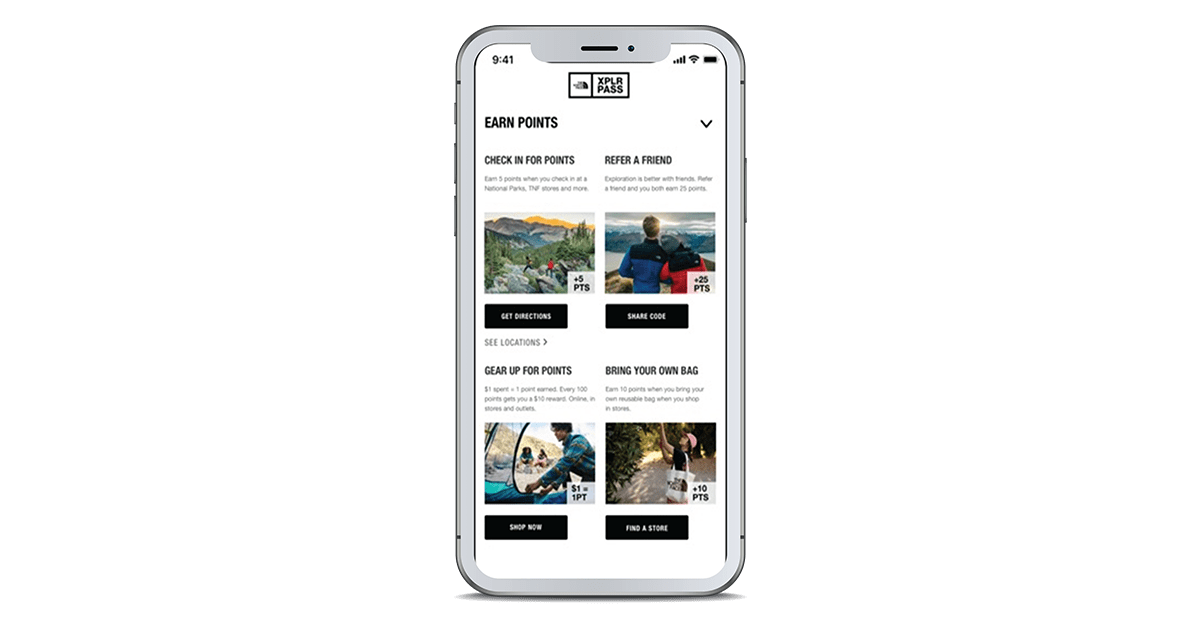
Take The North Face, for example, which has a loyalty program geared toward experiential benefits. It incentivizes loyalty members to earn more rewards by offering flexibility in how they’re redeemed—with options tailored to match its customers’ lifestyles.
Customers can earn points with the XPLR Pass program in the traditional way on every purchase, and in some unique ways. Like attending The North Face events, checking in at certain locations, and downloading The North Face app.
When it comes time to redeem rewards, customers can use points toward unique travel experiences, like a mountain climbing adventure in Nepal.
Using points toward unique travel experiences is differentiating and sets this program apart. These unique program benefits make sense for The North Face customers because of their passion for outdoor events and travel.
Implement Cause Marketing
According to our 2022 Customer Loyalty Data Study, more than a quarter (28%) of Gen Z consumers say their favorite brands do good in the world or have a positive social impact. Brands become involved in cause marketing when they take a position on a social issue and tie it to an online or in-store promotion.
Besides product quality and price, consumers are loyal to brands because they instill a sense of community (22%) and have a positive social impact (16%).
When brands stand for a specific cause they can create strong emotional bonds with their customers. In turn, loyal customers might share their fondness for the brand with family and friends.
Engagement is such a big piece of the loyalty puzzle for brands. If you can showcase a social cause in a positive light on behalf of your brand, it will spark excitement among your loyalty program members.
Consumers often like to support brands that believe in the same causes as they do. This can also have a very positive effect on brands as they might receive increased interest and engagement.
Shoe brand TOMS has always been involved with charitable causes and philanthropy is vitally important. Consider that TOMS donates one-third of its profits to various grassroots causes.
Other brands like Sephora and DSW allow their loyalty program members to donate their points balances to charities.
Having the Best Loyalty Program Means Listening to Your Customers
When just about every brand out there offers a loyalty program, it can be challenging to stand out and engage your customers regularly. But by offering these elements in your program, you can stand with the best.
First, make sure your customers know about your loyalty program and that the signup process is quick and easy. Then, leverage your brand and offer a mix of transactional and experiential benefits to fulfill your members’ need to save money and feel excited but also feel like they are understood. It’s important to offer not only attainable options for redeeming points but also how to earn rewards.
Lastly, consider adding in some loyalty amplifiers like sweepstakes or gamification to make the program incredibly engaging.
Keep these points in mind and you could end up with one of the best loyalty programs in the world.
Download our 2023 Loyalty Programs Data Study here to learn more about what consumers want to see.